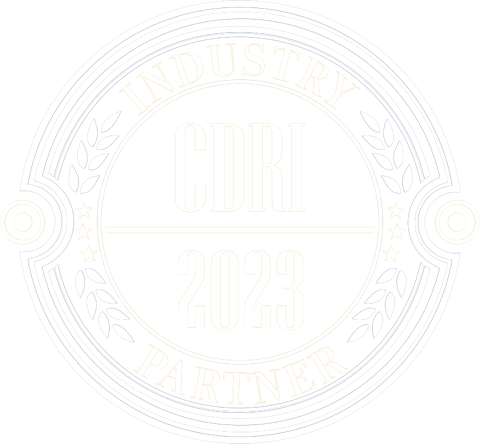Bankruptcy
Should I file for Bankruptcy?


By Renauld Smith
Industry Veteran & Executive Director of IAPDA
What is Bankruptcy?
While filing for bankruptcy is never an easy decision, it’s sometimes the right one. And yes, it will have a negative impact on your credit but there is a huge difference between Chapter 7 or Chapter 13. Chapter 7 allows you to walk away from all your unsecured debt where Chapter 13 is a repayment plan. Either way, you can avoid ongoing credit damage and start to rebuild instead of continuing to try and dig yourself out of debt. IAPDA can connect you with a local bankruptcy attorney to explain which option is best for your unique situation.
Type of Bankruptcy
Bankruptcy filings in the United States fall under one of several chapters of the Bankruptcy Code, including Chapter 7, which involves the liquidation of assets; Chapter 11, which deals with company or individual reorganizations; and Chapter 13, which arranges for debt repayment with lowered debt covenants or specific payment plans.
Chapter 7 Bankruptcy
Individuals—and in some cases businesses, with few or no assets—typically file for Chapter 7 bankruptcy. It allows them to dispose of their unsecured debts, such as credit card balances and medical bills. Those with nonexempt assets, such as family heirlooms (collections with high valuations, such as coin or stamp collections); second homes; and cash, stocks, or bonds must liquidate the property to repay some or all of their unsecured debts.
A person filing Chapter 7 bankruptcy is basically selling off their assets to clear their debt. People who have no valuable assets and only exempt property—such as household goods, clothing, tools for their trades, and a personal vehicle worth up to a certain value—may end up repaying no part of their unsecured debt.
Pros & Cons
Chapter 7 offers the fastest path through bankruptcy. A Chapter 7 filing may take as little as four months from filing to final resolution. This is largely because there’s no repayment plan involved, as is the case with Chapter 13 bankruptcy, which can involve three to five years of regular payments before debts are paid off.
In Chapter 7, filers may get to keep some personal property that’s exempt from liquidation. Exemptions vary by state and aim to let debtors keep working and living. Exceptions may include automobiles, clothing, furniture, pensions and some home equity. In practice, most Chapter 7 filings are so-called no-asset cases where all the debtor’s assets are exempt.
Reaffirmation is a useful Chapter 7 tool that gives a debtor some flexibility. If a debtor wishes to keep specific secured debt, they can reaffirm the debt, or make an agreement with the creditor to pay all or a portion of the amount owed. This tool can let the debtor keep, for instance, a home or car that may otherwise have to be sold.
The major downside of Chapter 7 is that you’ll have to sell certain property that bankruptcy won’t let you keep (non-exempt assets). Another limitation of Chapter 7 is that co-signers may still end up on the hook for their portion of the debt—creditors are still free to pursue your co-signer, even if they can no longer pursue you. Plus, you can only file Chapter 7 once every eight years.
Not everyone can file Chapter 7. To qualify, your current monthly income (average monthly income for six months prior to the bankruptcy case) must be less than the median income for your household size in your state. If your monthly income is too high, you must pass a means test to qualify. If a Chapter 7 file has too much disposable income under the means test, the court may reject the petition or switch it to a Chapter 13 filing.
Chapter 13 Bankruptcy
Individuals who make too much money to qualify for Chapter 7 bankruptcy may file under Chapter 13, also known as a wage earner's plan. It allows individuals—as well as businesses, with consistent income—to create workable debt repayment plans. The repayment plans are commonly in installments over the course of a three- to five-year period. In exchange for repaying their creditors, the courts allow these debtors to keep all of their property, including otherwise nonexempt property.
Other Bankruptcy Filings
While Chapter 7, Chapter 11, and Chapter 13 are the most common bankruptcy proceedings, especially as far as individuals are concerned, the law also provides for several other types
Pros & Cons
Chapter 13 lets filers protect their homes from foreclosure. This type of bankruptcy halts foreclosure and allows the debtor to catch up on late mortgage payments. Other debts can be restructured to give the borrower more time to pay them off.
Chapter 13 may protect co-signers through a special provision. And, like Chapter 7, creditors have to stop trying to collect debts when the petition is filed. The debtor under Chapter 13 makes payments to a trustee, who distributes funds to creditors, so debtors don’t have to have any contact with creditors while making payments.
The downside of Chapter 13 is that the debts still must be repaid. It also takes longer than Chapter 7. It’s usually at least three to five years before the payment plan finishes and the court discharges debts.
Chapter 11 Bankruptcy
Businesses often file for Chapter 11 bankruptcy, the goal of which is to reorganize, remain in business, and once again become profitable. Filing Chapter 11 bankruptcy allows a company to create plans for profitability, cut costs, and find new ways to increase revenue. Their preferred stockholders, if any, may still receive payments, though common stockholders will not.4
For example, a housekeeping business filing Chapter 11 bankruptcy might increase its rates slightly and offer more services to become profitable. Chapter 11 bankruptcy allows the business to continue conducting its business activities without interruption while working on a debt repayment plan under the court's supervision. In rare cases, individuals can also file for Chapter 11 bankruptcy.5
Pros & Cons
Chapter 11 aims to allow a business to stay in operation while debts get restructured, paying creditors over time. This is a major plus for the filer and, often, for creditors who may otherwise have no prospects of repayment.
Chapter 11 filings are generally the most complex, costly and lengthy. When a major corporation seeks bankruptcy protection, typically it’s under Chapter 11. The court fees are much higher, attorney fees can be far higher yet and Chapter 11 cases require years to conclude.
Chapter 11 cases rarely have a trustee. Instead, the filer acts as trustee in a role called the debtor in possession. The debtor in possession keeps operating the business and works with creditors to create a repayment plan. A majority of creditors have to vote for the plan to get it approved.
- Chapter 9 bankruptcy is available to financially distressed municipalities, including cities, towns, villages, counties, and school districts. Under Chapter 9, municipalities do not have to liquidate assets to repay their debts but are instead allowed to develop a plan for repaying them over time.7.
- Chapter 10 bankruptcy, which effectively ended in 1978, was a form of corporate bankruptcy that has been supplanted by Chapter 11.
- Chapter 12 bankruptcy provides relief to family farms and fisheries. They are allowed to maintain their businesses while working out a plan to repay their debts.8.
- Chapter 15 bankruptcy was added to the law in 2005 to deal with cross-border cases, which involve debtors, assets, creditors, and other parties that may be in more than one country. This type of petition is usually filed in the debtor's home country.
How to find a bankruptcy attorney
Your bankruptcy attorney will serve as your advocate and guide through what is a sometimes-confusing process. Taking the time to contact a few lawyers and knowing what to look for can set you on the path toward successfully filing for bankruptcy.
When hiring an attorney to help you file your Chapter 7 or Chapter 13 bankruptcy case, look for expertise, a fair price, and a communication style you’re comfortable with.
To find a local bankruptcy attorney, seek personal referrals from friends or family or your own attorney. You can also find bankruptcy attorneys through several online directories promising to help with finding a bankruptcy lawyer in your area. Be aware, however, that many of these directories simply list attorneys in exchange for a fee and don’t offer a guarantee of quality. Bring a discerning eye to any listing you consult.
When should you file for bankruptcy?
Bankruptcy law exists to help people who have taken on an unmanageable amount of debt—often as a result of large medical bills or other unexpected expenses that are no fault of their own—to make a fresh start. But it isn’t a simple process and doesn’t always lead to a happy ending.
So before filing for bankruptcy, be sure to explore all your alternatives and be prepared for some of the negative consequences described above. If you decide that bankruptcy is your only viable option—as hundreds of thousands of Americans do every year—remember that the blot on your record will not be permanent. By using credit carefully in the future and paying your bills on time, you can begin to rebuild your credit and gradually put bankruptcy behind you.
Alternative to bankruptcy
- Debt settlement
- Debt consolidation
- Credit counseling
KEY TAKEAWAYS
- Bankruptcy is a legal proceeding carried out to allow individuals or businesses freedom from their debts, while simultaneously providing creditors an opportunity for repayment.
- Bankruptcy is handled in federal courts, and rules are outlined in the U.S. Bankruptcy Code.
- There are various types of bankruptcy, commonly referred to by their chapter within the U.S. Bankruptcy Code.
- For instance, Chapter 11 bankruptcy allows businesses to reorganize and reemerge while Chapter 7 relates to individual bankruptcy.
- Bankruptcy can allow you a fresh start, but it will stay on your credit reports for a number of years and make it difficult to borrow in the future.
IAPDA can provide you with a certified, licensed professional that specializes in Bankruptcy solutions. Get the professional help you need. Click the "Free Consultation" button for a free consultation.





